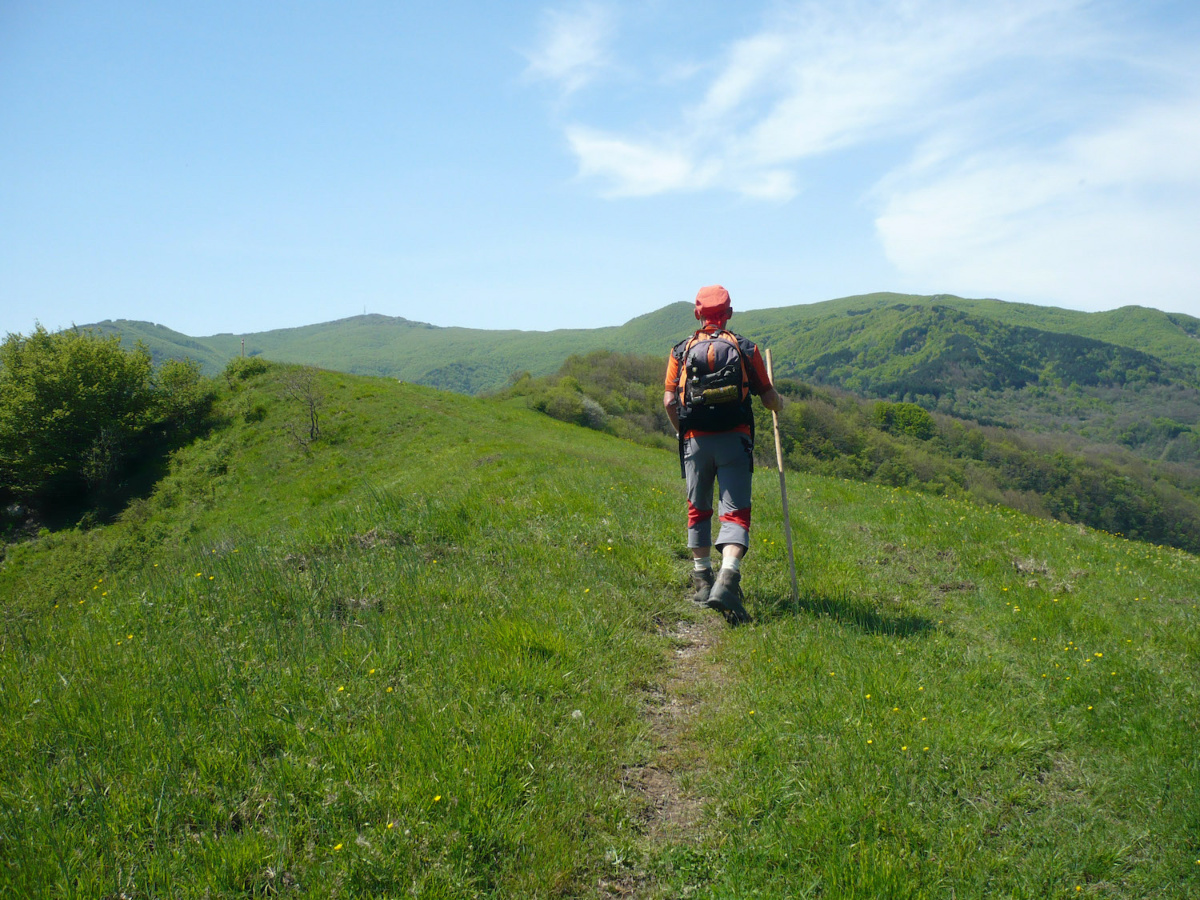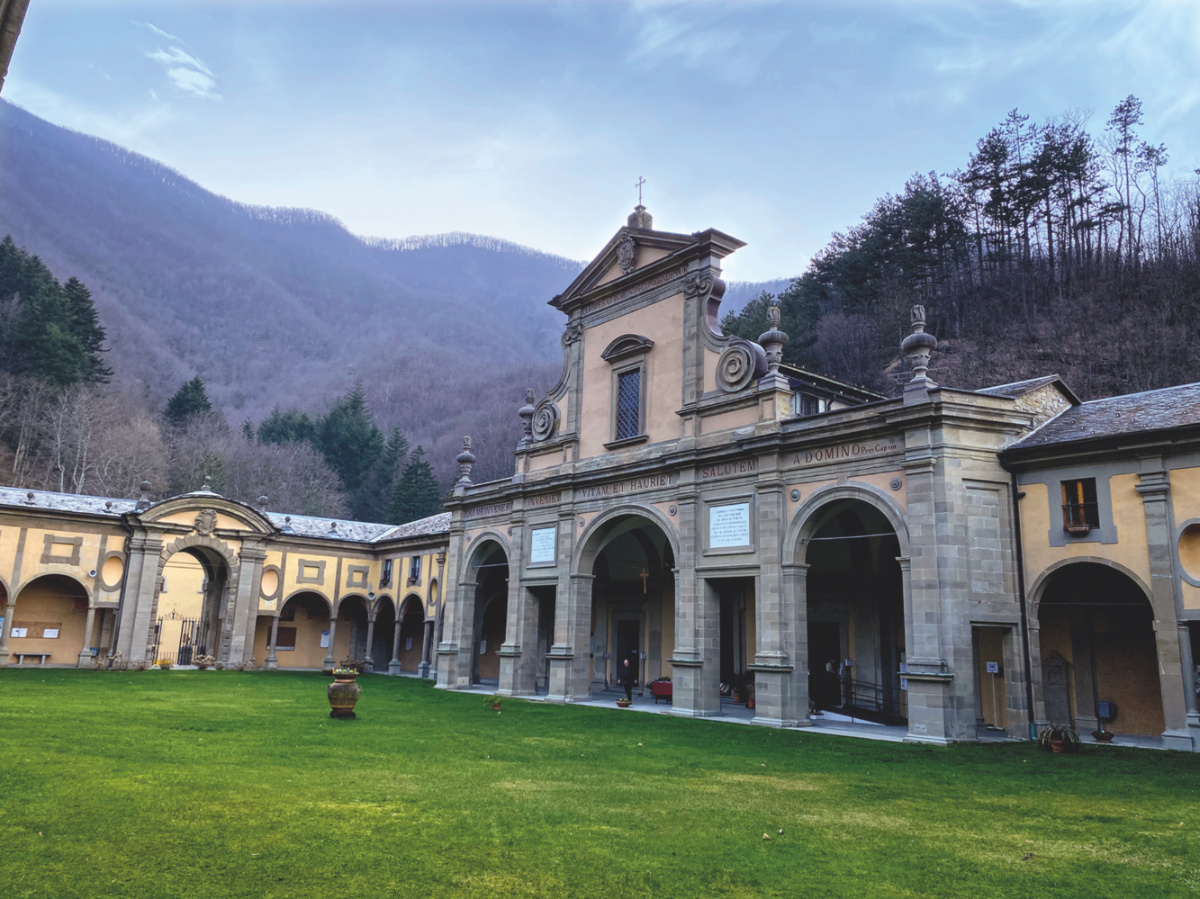
ANGELA YOUNGMAN looks at how newly revived pilgrim routes in Italy’s Emilia-Romagna region are attracting a new generation of pilgrims…
For centuries, people have been coming to the Italian region of Emilia-Romagna in search of peace, of atonement, and spiritual growth. Now in the 21st century, a new generation of pilgrims are exploring these newly revived pilgrimage routes drawn by the need to experience peace, the outdoors and tap into an ancient art and culture.
“Emilia-Romagna is a land that is rich in testimonies of faith,” says Federica Cortezzi, of Emilia Romagna Turismo. “They are embedded in its culture and in the places of worship located along the roads of historical-religious itineraries. At the time, these paths were a source of spirituality and a sign of the welcoming hospitality offered to pilgrims but, today, they also lead to the soul of a region. The paths are spiritual destinations linked to art, sustainability and slow experiences, to tradition and to the excellence of Emilia-Romagna. They became a tourist product to enhance the beauty of the region and combine spirituality with tourism.”

A pilgrim walking on one of the spirtual paths across Italy’s Emilia-Romagna. PICTURE: Courtesy of Emilia-Romagna Turismo
There are now 18 spiritual paths that cross Emilia-Romagna, an area in Northern Italy roughly covering a region starting near Genoa and stretching to Ravenna, Ferrara, Bologna and San Marino.
A website dedicated to these paths through Emilia-Romagna has been launched and among the routes highlighted on the website are the Via Romea Germanica, the Via Romea Nonantolana and Romea Longobarda – all ancient European pilgrimage paths leading to Rome – as well as the Cammino di Sant’Antonio (Saint Anthony’s Way), the Cammino di Assisi (Assisi Way), the Cammino di San Vicinio (Saint Vicinius Way) linked to places of importance in the lives of St Francis, St Anthony and St Vicinius, first bishop of Sarsina. Others include the Via Matildica del Volto Santo (Matilde’s Way of the Holy Face), the Viae Misericordiae, and the Piccola Cassia Way.
The walking routes, which are all fully accessible by pedestrians as well as cyclists, have route lengths varying from 110 to 140-plus kilometres, and can be undertaken in stages throughout Emilia-Romagna, allowing time to stop at important locations en route.
The walking routes, which are all fully accessible by pedestrians as well as cyclists, have route lengths varying from 110 to 140-plus kilometres, and can be undertaken in stages throughout Emilia-Romagna, allowing time to stop at important locations en route.
Some routes are very ancient. The Francigena Way is a long route starting in Canterbury, UK, and ending at the tomb of St Peter in Rome. It began as a detailed travel itinerary in the 10th century AD written by Bishop Sigeric and has experienced a constant flow of pilgrims over the centuries since.
Other routes were set up for specific reasons, such as the Abbot’s Way. This route was originally set up by the monks of Bobbio who used it as a safe route when travelling between the cities of Pavia and Rome as it gave complete control across the northern Appennines. The route was also popular among Irish pilgrims as it included a stop in Bobbio to pray at the tomb of St Columbanus, the Irish Abbot who founded the local abbey.
A typical route is that of St Francis’s Way. The walk begins in Rimini where the cathedral was built around a much older church dedicated to St Francis. The next stop is at Verucchio, a picturesque medieval town containing the Monastery of Santa Croce, the oldest Franciscan site in the region. According to tradition, this is where in May, 1213, St Francis stopped to rest en route to San Leo. Tradition holds that he planted his walking stick in the ground, and it took root growing into the centuries old cypress that can still be seen today within the monastery.
Further along the route is the Monastery of Saint Igne, close to San Leo, where Count Orlando Cattani of Chiusa presented Francis with the mountain of La Verna. Another welcome spot along the trail is the hermitage of Sant’Alberica where St Francis stopped on his way to Mount La Verna. It is a perfect spot for quiet reflection and prayer, situated among pristine natural surroundings 1147 metres above sea level.
While following the paths, pilgrims can stop at important prayer centres and monasteries such as the Ospizio di San Pellegrino in Alpe near Reggio Emilia, the Pomposa Abbey near Ferrara and Sant’Apollinare in Classe in Ravenna. Accommodation is available in lodges, pilgrim houses, hostels, convents, monasteries and church houses.

The Sanctuary of Madonna of Bocca of Rio in Baragazza. PICTURE: © Michele Boschi/Courtesy of Emilia-Romagna Turismo
These pilgrim routes are proving extremely popular.
Cortezzi says that “the most requested paths are those that have a direct link with art, history and spirituality, with places of great beauty that allow for an intimate and changing experience”.
“The events of major attraction are those that enhance the theme of faith and spirituality such as ‘Open Monasteries Emilia Romagna’, an event during which it is possible to live unique experiences by meeting the monastic or conventual communites that still live in ancient abbeys and monasteries, visit secret places in the building of the curia, and learn more about the life of the Benedictine monks.”
She adds that “[a]lmost everyone is interested in deepening the reasons that make these places still current and that allow, especially after the COVID-19 pandemic, to establish authentic ties with local populations.
“People like the authenticity of the experience, the possibility of rediscovering time in an active way and getting in touch with the communities that live in the territories are the elements that generate enthusiasm and amazement in visitors and lead them to want to return along the paths and places of faith, discovering new paths and trying more and more experiences.”
It is a concept that is set to grow over the forthcoming years.
Over the past five years, the number of paths through Emilia-Romagna has grown from 10 to 20 covering both historical and pilgrimage routes.
“We support the managers of the paths to help them develop a sustainable government system and enhancement of the artistic and historical heritage of the route,” says Cortezzi. “It is a sustainable development project that is always evolving.”





